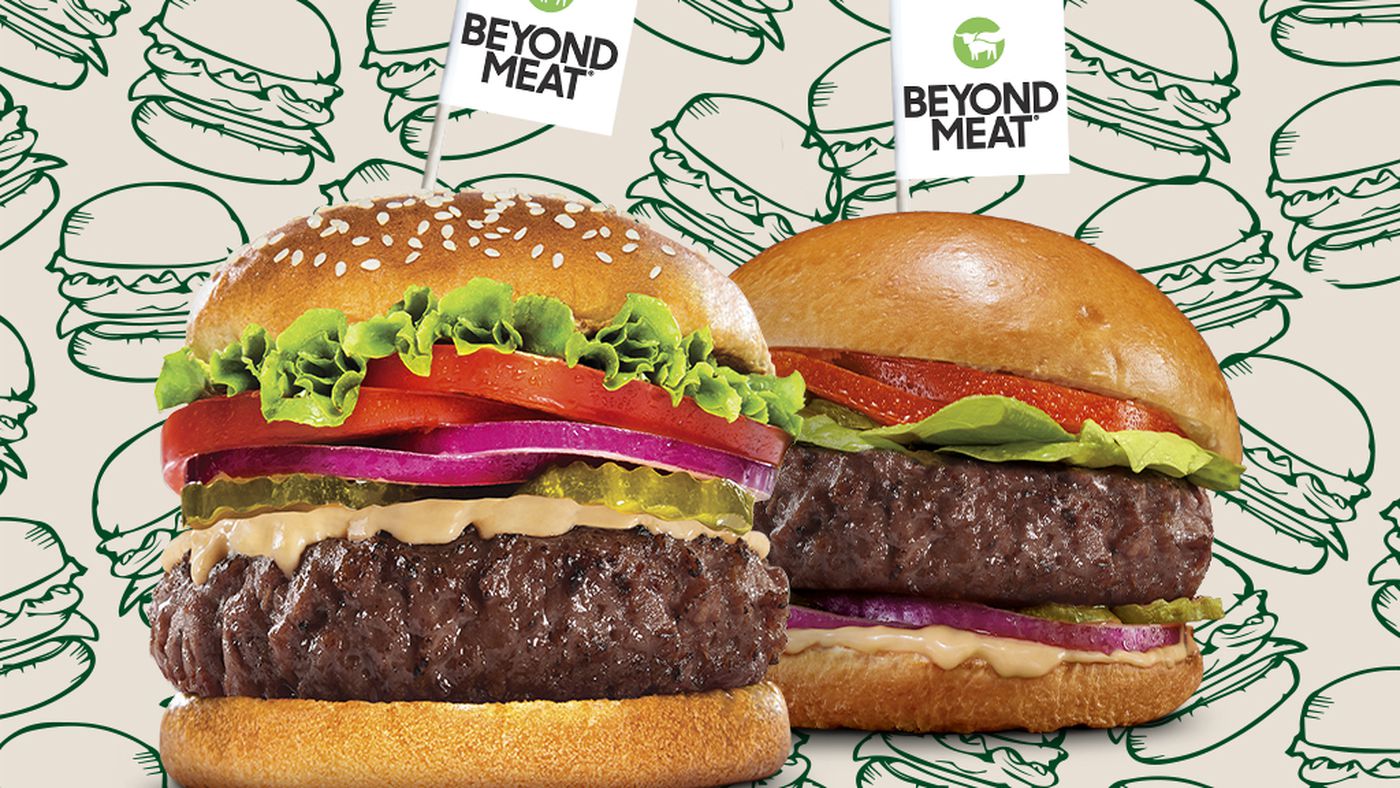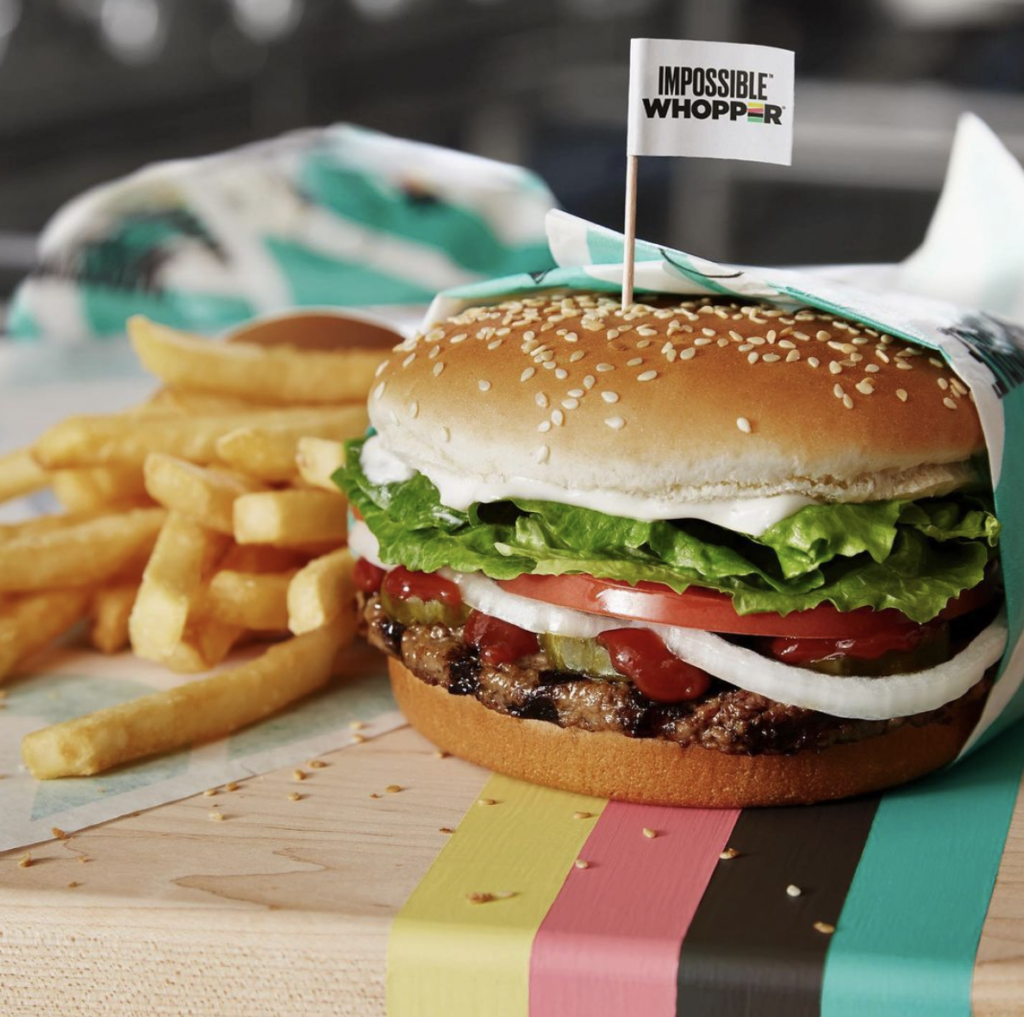Beyond the Impossible: The Surge in Plant-Based Food Options

Growing up, my options at fast-food restaurants as a vegan were a side of fries, a cheeseburger without the cheese or the burger, or the grass out back. The recent renaissance of plant-based proteins and options like Beyond Meat and Impossible Foods has added options and a feeling of empowerment to my fast-food trips. Whether for dietary restrictions, environmental reasons, or just because, one can enjoy dishes without sacrificing the texture, flavor, and nutrition meat provides.
The Impossible Beginning
There has been both an irrefutable and immense influx of plant-based options into the market. The breakthrough case was Burger King’s partnership with Impossible Foods to create the Impossible Whopper. Not only was it a plant-based option at a large chain, but it was a direct replacement. Rather than create a totally different veggie option like usual, it has all the same toppings and preparement as the original Whopper. The importance of this is heavy in terms of normalizing plant-based options and showing they can be for everyone.
The list of plant-based options goes on and on now. Carl’s Jr. has a Beyond Burger comparable to the Impossible Whopper, Del Taco has a ground beef protein derived from Impossible Foods, and Starbucks has their Impossible Breakfast Sandwich which also features plant-based egg and cheese. There are also companies testing out the waters with limited plant-based releases in specific locations. For example, Panda Express is trying out a vegan version of their iconic orange chicken in LA and NYC.
The push of plant-based options into the mainstream represents a shift in representation and perception of more eco-friendly diets, as well as a shift in consumer demand that does not depend on meat to complete a meal. Common ideas of vegetarian food involve mush, squeaky tofu, and leaves, but with these new plant-based foods coming out, the image is transformed into something tasty and attractive. This shows that people are becoming more receptive to non-meat meals and are wanting to incorporate them into their diets.
Not Just Vegans
As the supply is here, it makes sense that there is a matching demand, but who exactly makes up this demand? Although it is easy to assume just vegans and vegetarians want these options, it is important that vegetarians and vegans are not exclusively centered in these conversations as the goal is not to shame and push full diets on others as that ignores cultures where meat is important and diets where it is needed. Rather, the goal is less meat and increased accessibility to plant-based options. As the solutionist movement grows and knowledge of the positive impact of including more plant-based foods in diets is shared, the options should be accessible and casual in order to include as many people as possible.
A Global Movement
The plant-based movement is not confined to just the United States. Recently in the UK, Pizza Hut has made Beyond Meat a permanent topping on their menu. The McDonalds there also have veggie dippers and wraps, their KFC has a soy-based chicken sandwich, and their Taco Bell has launched a new protein made from oats, beans, and peas. As climate change is a global issue, it is helpful to turn to each other and learn to push forward in communities. American fast food chains have a lesson to learn from British plant-based foods in thinking outside of soy-based and burgers.

Reducing your individual meat consumption is one way to take action and reduce your footprint on the environment. The increase in information available on this has led to a growth in demand for plant-based foods. As the want for more options grows, companies will have no choice but to expand their menus to include them. This will make eating less meat more accessible and easier. Although there are a lot of new plant-based options, we still have room to innovate and add more. When it comes to plant-based eating, we must continue to push Beyond the expected because nothing is Impossible.


Τhis piece of writing is ɡenuinely a pleasant one it helps new net viewers, who
are wishing for blogging.